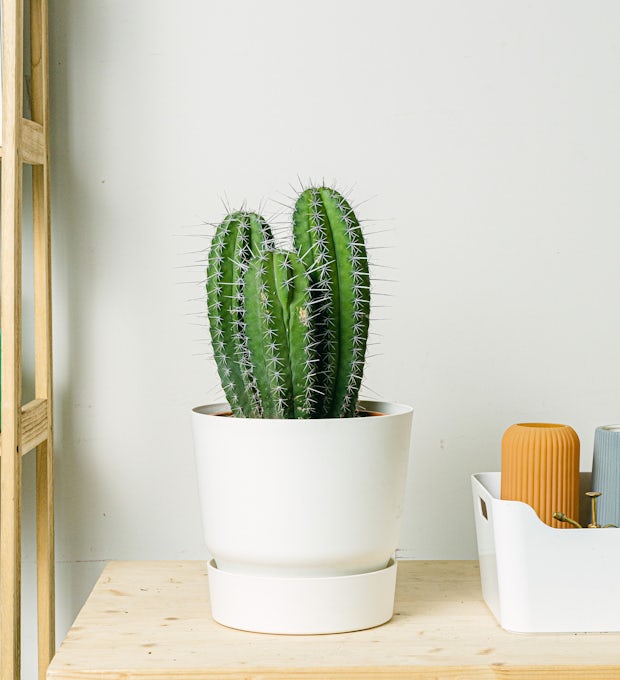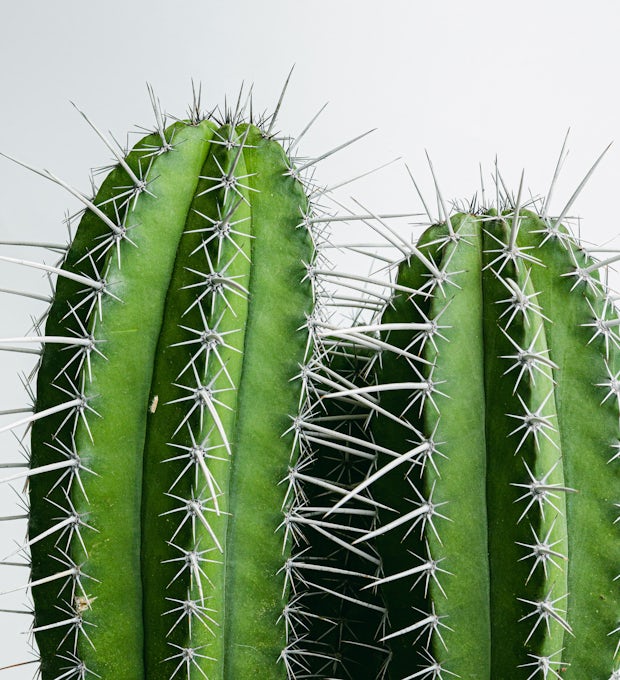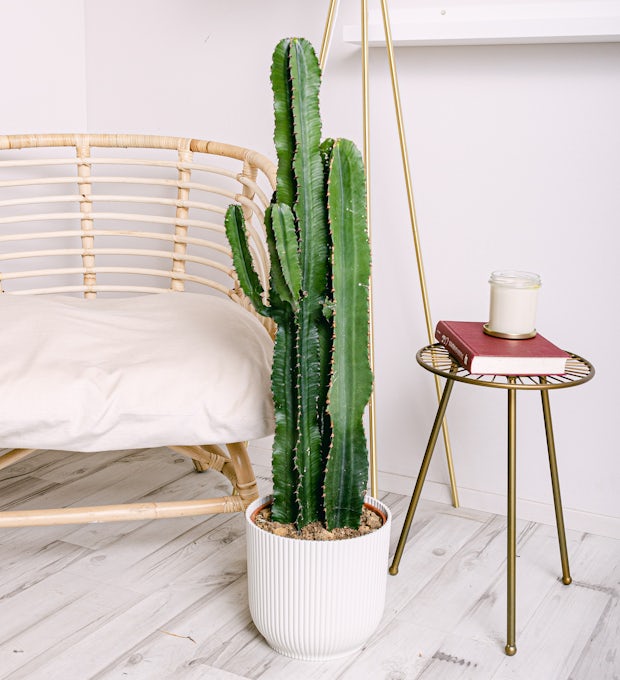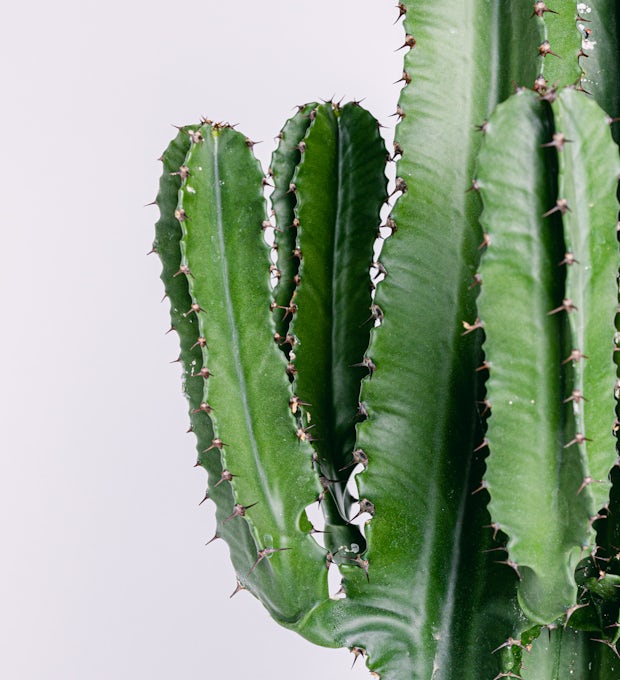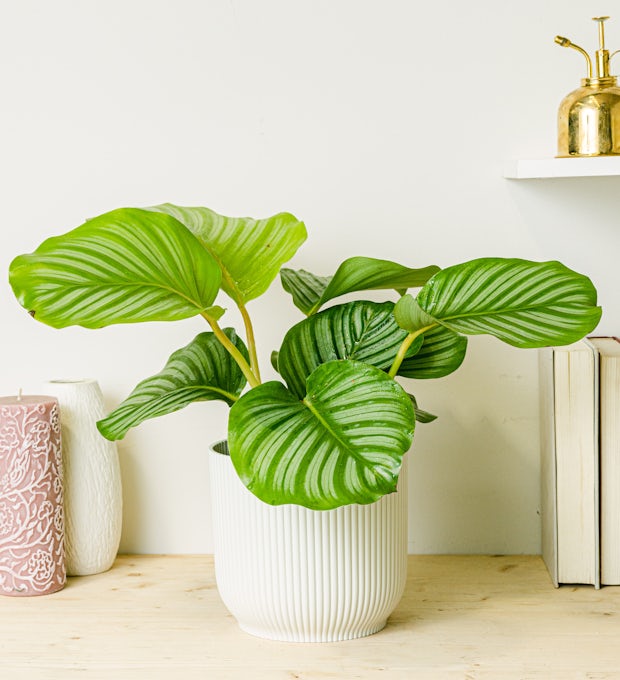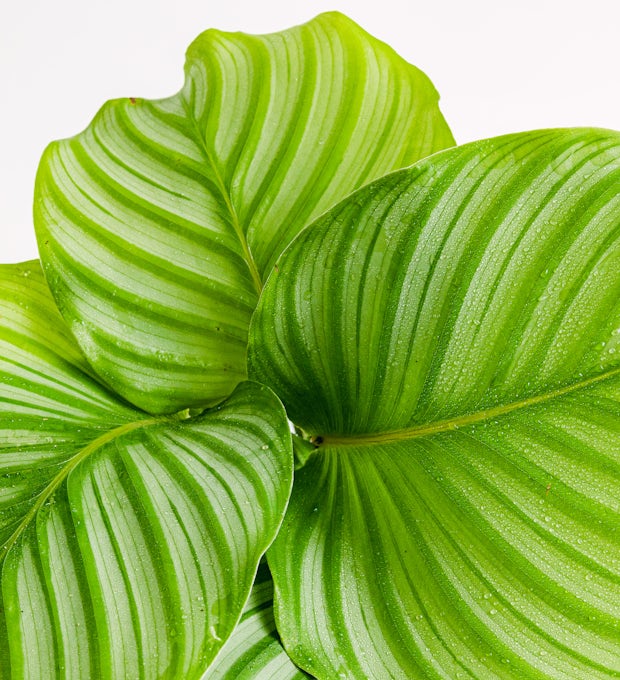Plants can have a positive impact on our well-being and even help improve the indoor climate. In this article, we'll look at which plants are best for air purification and how many plants you need to create a healthy indoor climate. We'll also give tips on how to properly care for plants to keep them healthy and happy. We will also look at how to place plants as a decorative element in your home and why they are a sustainable alternative to traditional air purifiers.
The effect of plants on well-being
Plants have a positive effect on our well-being. They can help us feel more relaxed and happier in our spaces. Plants not only improve the indoor climate, but also have a calming and stress-reducing effect. Through their ability to filter pollutants from the air and produce oxygen, they contribute to better air quality. This can have a positive impact on our health and help us feel more focused and energized. In addition, plants create a pleasant atmosphere and create a connection with nature, even in closed spaces. It is important to note that not all plants have the same ability to purify air. Certain plants, such as the green lily, the bow hemp or the dragon tree, are particularly suitable for air purification. To achieve a healthy indoor climate, it is recommended to place several plants in the rooms. The exact number depends on the size of the room, but in general, it is recommended to place at least one plant per 10 square meters. In order for the plants to remain healthy and to develop their full effect, proper care is crucial. Regular watering, adequate light, and occasional fertilization are important aspects of plant care. By placing the plants correctly in the room, you can enhance their decorative effect and at the same time benefit from their air-purifying effect. Whether on windowsills, shelves or as hanging plants - there are many ways to use plants as a decorative element in your own four walls. Plants also offer a sustainable alternative to traditional air purifiers and provide a healthy indoor climate in a natural way.
Which plants are best for air purification?
Plants are not only decorative, but also very useful for our health. They can help purify indoor air and create a healthy indoor climate. But which plants are best suited for air purification? One of the most well-known plants is bow hemp, also known as "mother-in-law's tongue". It is very easy to care for and can remove formaldehyde-containing substances from the air. Also very effective is the dragon tree, which breaks down formaldehyde and benzene. The areca palm, also known as the "golden fruit palm," is particularly good at filtering formaldehyde, xylene, and toluene from the air. Another air purifier is ivy, which absorbs benzene, formaldehyde, and trichloroethylene. The peace lily is particularly good for bedrooms because it produces oxygen at night and removes pollutants such as formaldehyde and benzene. The rubber tree is also an effective air purifier that breaks down formaldehyde in particular. To achieve an optimal effect, at least two plants should be placed per ten square meters. However, it is important to note that plants are not miracle cures and require regular care. However, with these plants as a sustainable alternative to air purifiers and the like, you can create a healthy indoor climate in a natural way.
We ship plants to all locations, you can see more options here.
How many plants do you need for a healthy indoor climate?
To achieve a healthy indoor climate, you may be wondering how many plants you need. There is no exact number of plants that is suitable for each room, as it depends on various factors, such as the size of the room and the type of plants. As a rule of thumb, it is recommended to place one plant per 10 square meters of room area. This allows for sufficient distribution of plants and ensures good air quality. However, keep in mind that it's not just about the number of plants, it's also about their diversity. Different plant species have different air purification abilities and offer different indoor climate benefits. Therefore, it is advisable to choose a mixture of different types of plants. By placing an appropriate number and variety of plants in your space, you can improve air quality and create a healthy indoor climate.
We ship plants to all locations, you can see more options here.
The right care for healthy and happy plants
For a healthy and happy plant, proper care is essential. There are some basic things that need to be considered to ensure that the plant is growing in an optimal environment. One of the most important considerations is light. Each plant has different needs in terms of the amount and intensity of light, so do your research before buying. Irrigation is also crucial. Most plants require regular watering, but it's important not to give too much water, as this can cause root rot. The use of high-quality soil is also an important factor in the growth and health of the plant. It is advisable to use special soil for houseplants, as it provides a balanced mix of nutrients and moisture. In addition, you should also pay attention to the humidity. Some plants require higher humidity levels than others and may benefit from occasional spraying. Finally, dead leaves and stems should also be removed regularly to ensure that the plant can focus its energy on growing new leaves and branches. With these simple steps, you can ensure that the plants stay healthy and happy and can contribute to a healthy indoor climate.
Plants as a decorative element in your own four walls
Plants are known not only for their air-purifying properties, but also for their decorative abilities. They can breathe life into any room and give it a natural atmosphere. There are a variety of plant species that are suitable for use as a decorative element indoors. From succulents to ferns, there is a green companion for every taste and interior. Placing plants in a room can also help improve visual perception and provide a sense of calm and relaxation. When choosing plants as decorative elements, it is important to make sure that they meet the light and moisture requirements to ensure healthy growth. Some plants need more light than others, while others need more moisture. It's also important to consider the space requirements of each plant to ensure they have enough room to grow and spread. Some plants are better suited to small rooms or window sills, while others require larger spaces. With the right care, plants can be used as decorative elements in your own four walls for years to enjoy and contribute to the creation of a healthy indoor climate.
Tips for placing plants in the room
Plants can not only contribute to air purification, but can also be a decorative element in your home. But what is the best way to place the plants in the room? First of all, you should make sure that there is enough light. This is because without sufficient light, the plants cannot grow and thrive properly. It is recommended to place the plants near windows or in bright places. They should also not be placed too close to radiators or air conditioners, as this can lead to dry air and a poor indoor climate.
Another important consideration when placing plants is the size of the plant and the space. Small plants do well in small spaces, while larger plants look better in larger spaces. You should also make sure that the plants don't get in the way or make the room look too cluttered.
It can also be useful to place different types of plants in different areas of the room. For example, you can position a larger plant in a corner of the room and place smaller plants on shelves or windowsills.
To sum up, the placement of plants in the room plays an important role in creating a healthy and comfortable indoor climate. It is recommended to make sure that the plant has enough light and an appropriate size, as well as placing different types of plants in different areas of the room.
Plants as a sustainable alternative to air purifiers and the like
Plants can be a sustainable alternative to traditional air purifiers and other devices. Not only are they decorative, but they also help improve indoor air quality. Plants filter pollutants from the air and produce oxygen in the process. Through their natural ability to purify the air, they can help us breathe healthier in our own homes. Compared to air purifiers, plants do not require a power supply and therefore do not incur additional energy costs. Plus, they're a sustainable option because they don't release harmful chemicals and are easy to recycle. There are a variety of plants that are particularly suitable for air purification, such as aloe vera, bow hemp or ivy. It is recommended to place several plants in one room to maximize their effectiveness. Proper care is crucial for healthy and happy plants. This includes regular watering, adequate light, and occasional repotting. When placing plants in the room, it is important to meet the individual needs of each plant. Some prefer direct sunlight, while others prefer indirect light. By using plants as a sustainable alternative to air purifiers and other devices, we can not only improve our indoor air quality, but also contribute to environmental protection.
Plants are not only beautiful decorative elements, but can also contribute to a healthy indoor climate and serve as stress killers. Their effect on well-being has been scientifically proven, and they can even purify indoor air. There are various plants that are particularly suitable for air purification, such as the green lily or the bow hemp. But how many plants do you actually need to create a healthy indoor climate? Proper care is also crucial to have healthy and happy plants. Tips on how to place plants in the room can help you get the most out of their effects. In addition, plants are a sustainable alternative to air purifiers and other technical devices. Not only are they environmentally friendly, but they are also aesthetically pleasing.
As we spend more and more time indoors, it's important to think about the impact of indoor air quality on our health. incorporating plants into our living and working spaces can be a simple and effective way to improve the indoor climate and increase our well-being. But let's not forget that plants are living organisms that need care and attention. By taking care of them, we can not only benefit from their positive effects, but also create a connection with nature.
However, an open question remains: how can we ensure that plants continue to serve as stress killers and contribute to a healthy indoor climate? Perhaps we should think about how we can further promote the use of plants indoors. Perhaps we should also consider how we can use the positive effects of plants on our well-being in other areas of our lives. The possibilities are many – it's up to us to explore them and get the most out of them
